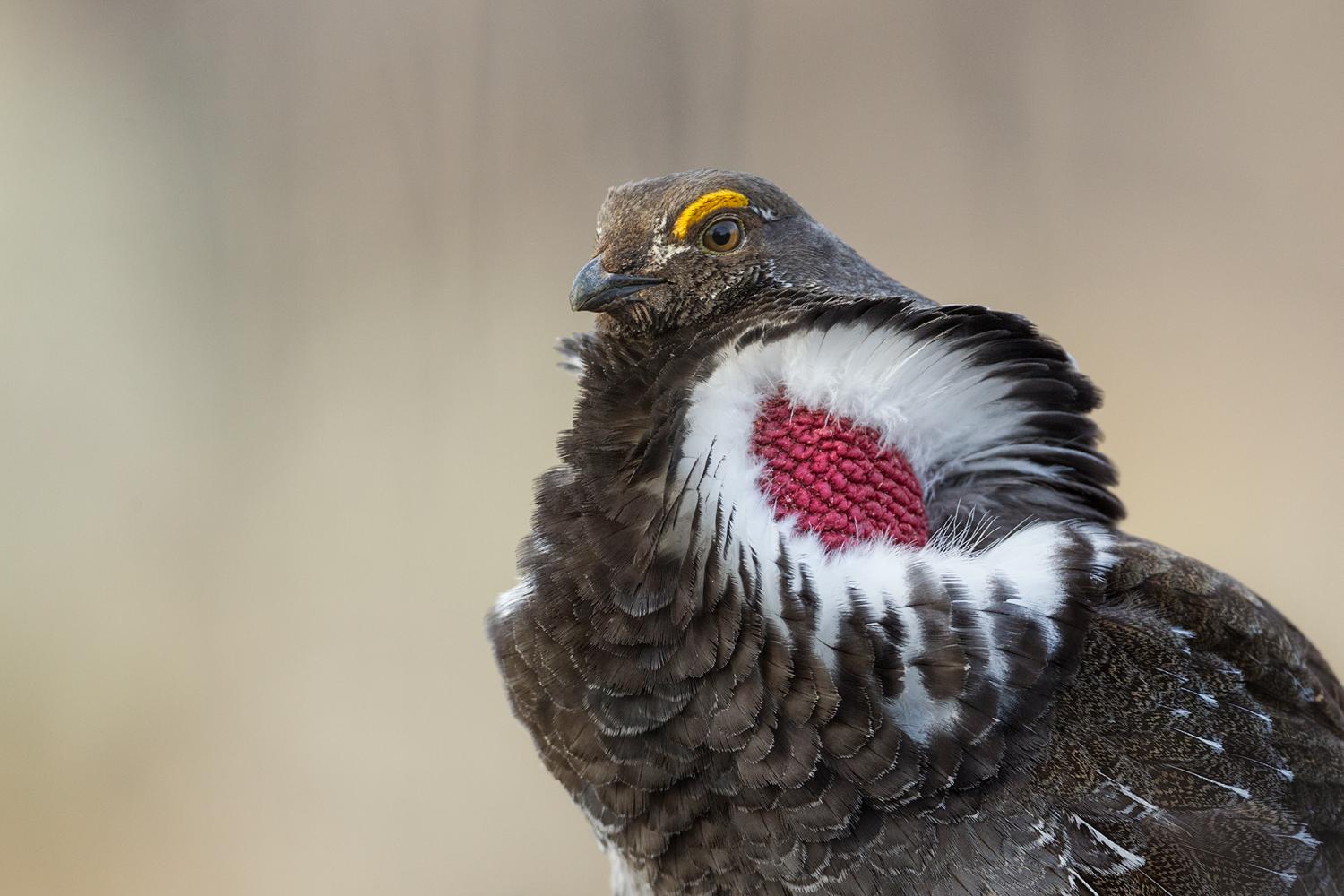81: Dusky Grouse
Love the eyebrows
I write to you from Arapahoe, Ute, and Cheyenne land. I am interested in learning about the different animals that live in the place where I was born. Before we start with today’s animal, I want to emphasize that biological classification as understood by western society has its roots in racism, sexism, and transphobia – here’s a good explainer about why.
Apologies for no newsletter yesterday – the vaccine booster took me out but I am grateful to have gotten it.
The Dusky Grouse – Latin name the delightfully fun to say Dendragapus obscurus – is the second largest grouse in North America. I’ll give you a hint about the identity of the largest – this bird’s endangered status has been a major issue in western Colorado for years.* The Dusky Grouse is one of the hardy animals that winters in the high country, where it roosts and feeds in stands of Douglas fir and pines. They eat conifer needles, leaves, and insects. In spring, they move down in elevation to sagebrush meadows where the males put on their fancy mating display (photo from same source):
“Male dusky grouse advertise their territories by calling and strutting. They will do this from many sites on their territory, but most commonly from a favored site. Males have a constant compulsion to call with a deep, resonant "OOP" sound. They are so driven that they continue calling even when they are aware that a predator is approaching. They usually call from the ground, but if they must, they will fly up into a tree to avoid a predator or to feed, and will resume calling from the tree.
When a male is aware that a female has entered his territory, he begins strutting fervently."
When a male is aware that a female has entered his territory, he begins strutting fervently. His erectile eyebrow tissues become engorged with blood, making them more prominent and his intense activity may cause the yellow color to shift to red. The feathers are splayed back from the inflatable air sacs, revealing bright red skin surrounded by a white ring of feathers on a black background. The tail is held up and fanned out.
A male's proud strut is punctuated by jumps combined with wing flapping that causes one of three possible sounds: flutter, drumming, and a single loud clap. Males sustain courting and defense of their territory for weeks in spring.”
I love that the Dusky Grouse – like its larger cousin the Greater Sage Grouse – spends most of the year trying to be as inconspicuous as possible, with camouflaged feathers that make them hard to see even when very close (I’ve had grouse burst out of bushes inches from me when I had no idea I was near them at all). Then mating time happens and the males go all out to be their showiest possible selves.
They are particularly found in Routt County, in northwestern Colorado. Rocky Mountain National Park’s website adds this interesting fact: “The number of tail feathers a bird has is usually constant within a species (and usually numbers around 10). The Dusky Grouse, however, can have from 15 to 22 tail feathers.”
Sadly because the Dusky Grouse relies on food found in those high altitude zones, their habitat is threatened by climate change. As the climate warms, plants and animals have to move upward in altitude to maintain the right climatic conditions – and all mountains have a top.

*the Greater Sage Grouse of course